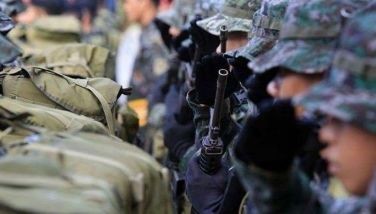Can we do twice as many vaccinations as we thought? (Second of two parts)
How would we go about being more sure and getting the proper authorizations? First, we should look at what data we do have. In both trials, a number of people dropped out before getting the second dose. While these are small but nonrandom samples, we could follow up to see what happened to these people. Lack of infection among this smaller group would not be sufficient to give us the green light we need, but a spike of infections would be a reason for caution.
Crucially, though, we should begin immediate single-dose trials, recruiting volunteers from low-risk populations who are first in line for the vaccinations. For example, among health care workers protective equipment works, rates of infection among this group have fallen sharply and severe disease is much more rare.Younger essential workers without risk factors are less likely to be severely affected if they are exposed, since this disease’s impact rises steeply with age. Just as tens of thousands of people volunteered for the earlier vaccine trials, many may well volunteer to test a placebo against a second dose, allowing us to quickly ascertain questions of durability and effectiveness of the single dose.
Is it very risky for those volunteers? There are scientific reasons to believe that the risk is not that high. For one thing, the initial shot – the prime – is clearly providing some immunity, and even if low-risk people are exposed to the virus later on, the natural infection in them could act like the booster: bolstering their immune system even further without causing severe, or even mild, disease. The rarity of reinfections from natural infections supports that line of thinking.
Second, what we know about the immune system and Phase 1 and 2 data suggest that older people’s immune systems do not respond as strongly to the single dose, which means that we should keep both this trial and the possibility of a single dose reserved for lower-risk groups: healthy people under 65 without significant multiple comorbidities. The key question we’re looking at is the durability of the immunity provided by that dose, whether it wanes over time and by how much. Immunity is not a switch that gets turned off overnight; we could monitor these volunteers monthly and stop the trial quickly if a significant uptick was detected.
The numbers need not be huge to provide us an answer. The benefit, however, is great. For one thing, we could double the number of lower-risk groups we could cover, especially essential workers who have suffered so much during this pandemic as they do not have the luxury of working from home. Second, we’d be able to roll out the vaccine much more quickly – now, the United States is planning to hold off half the doses in freezers, delaying vaccination. And a quicker rollout would help us get the pandemic under control much faster.
Even if we found the single dose to be somewhat less efficient than two doses, it’s important to remember that not long ago we would have been thrilled to have a vaccine even less effective than the single-dose numbers we’re seeing now.
If we start examining the effectiveness of a single dose now, and if we find that the data warrants it, we can go forward with it as quickly as possible. The prospect of adding hundreds of millions to those who can be vaccinated immediately in the coming year is not something to be dismissed.
Dr. Tufekci, a contributing opinion writer, has written extensively about the pandemic. Dr. Mina is an assistant professor of epidemiology at the Harvard T.H. Chan School of Public Health.
- Latest
- Trending

























